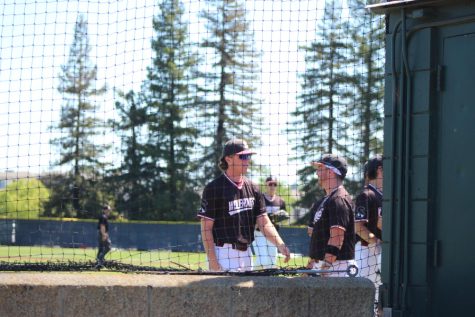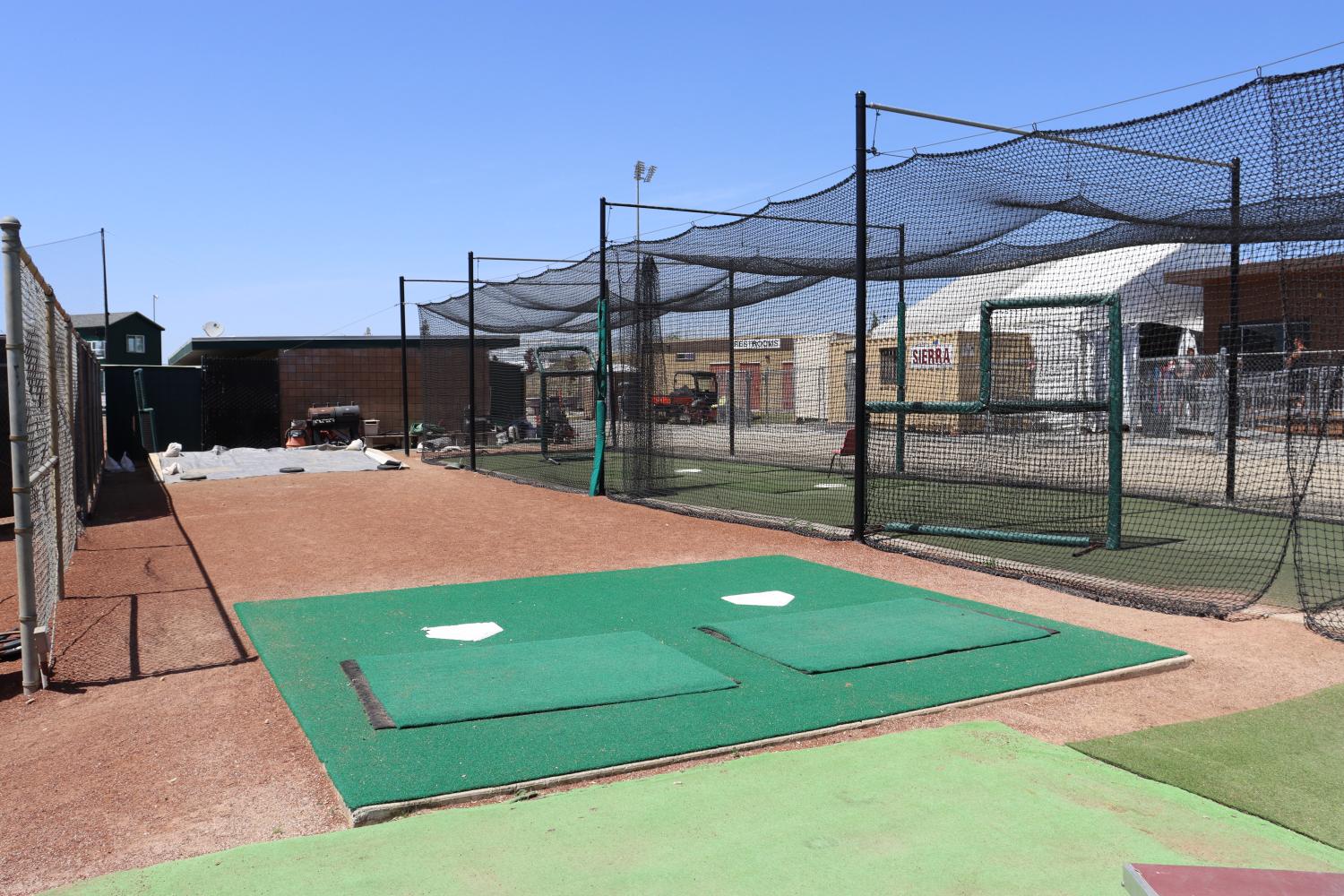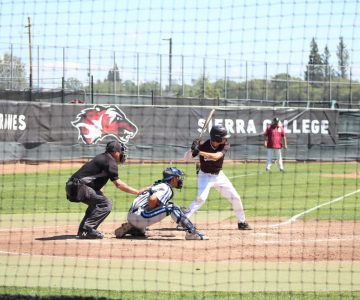For most people an injury is just an inconvenience. Something that slows them down for a few weeks, or maybe a couple months, though rarely does it end their career. Athletes, however, do not qualify as “most people.”
Despite frequent conditioning and training, athletes are not immune to injury. Instead, it seems the harrowed “injury bug” haunts both professional and amateur athletes. “Injuries are starting to become a bigger part of the game,” Tyler Kersey, a Sierra College sophomore baseball player, said during an interview on March 18. He continued, “You see it a lot in pitchers, [especially] arm injuries.”
As it turns out, Tyler is right.
Preparing and Protecting Players
Within Major League Baseball (MLB), there are 30 teams, each carrying a 40-man roster of active players. That’s 1200 active MLB players at any point, with many in the Minor League system waiting for their opportunity to make the jump to the majors.
According to MLB injury data via fantasy sports reporting site RotoWire, nearly 25% of active players were on the injured list at the beginning of 2024’s Spring Training. Moreover, 75% of those injuries were sustained by pitchers. Over 40% of all MLB injuries were tied to players’ elbows, arguably one of the most consistently used, and abused, parts of a player’s body, particularly amongst pitchers.
Former Sierra College baseball player, Ethan Yamaguchi, said in an April 25 interview:
“Players overuse their body parts, so they don’t recover well enough. It just keeps tearing and tearing until it eventually doesn’t work.”
In baseball, the most imperative position is the pitcher. Starting pitchers throw upwards of 100 pitches each game, frequently reaching speeds over 93 mph. Repeating this process every five-to-six days takes an unimaginable toll on the body, and can lead to persistent life-long injuries.
Sierra College baseball coaches are aware of the trauma on pitchers’ bodies and have invested time and resources into their strength and development programs.
“We bought into this program called ‘ArmCare,’ where it actually puts a sensor on the pitchers’ arms,”
Sierra College baseball Coach Ryan Evangelho said during an interview on March 18. “They do a bunch of different exercises, and it gives us feedback on an app of where their weaknesses are, so they know specifically… these are the exercises you need to do to strengthen those things. So, that’s one of the things we bought this year at Sierra to, again, take care of the pitchers and try to make sure that they’re not getting injured.”
Evangelho went on to say methods such as ArmCare “can strengthen [weaker] parts” of players’ bodies when used in conjunction with cross-symmetry bands and weighted balls. By integrating these strength training techniques, players can more effectively stay healthy.
Three MLB teams utilize ArmCare, including the Texas Rangers, who were the 2023 World Series champions. One former MLB player, Jake Jewell, said ArmCare’s “attention to detail is a game changer” according to ArmCare’s homepage
Through these tools and techniques, pitchers have been able to strengthen their arms and help to alleviate injury, with the goal of limiting injuries across the board for both college- and MLB-level players. While the technology is still new, and was only brought to Sierra College’s campus in the 2023-2024 school year, it does prove promising for future Wolverines.
These regiments, however, are not the only means through which a player can condition their arms.
Avoiding Injuries
According to an article by MLB.com, in order to limit injuries while pitching, players should participate in “weighted ball throwing programs” and “exercises that maintain joint health, function and mobility,” such as “end-range joint stretching/holding, breathing techniques, running mechanics and conditioning activities.”
To better prepare his players for higher levels of baseball, Coach Evangelho has incorporated many of these strategies into his practices. Sierra players also benefit from collegiate rules enacted to mirror changes seen in MLB over recent years. “We have a pitch clock like Major League Baseball,” Evangelho said. He continued, “I heard we might [implement larger bases] next year. We haven’t yet.”

The pitch clock is a rule in baseball that limits the time a pitcher can take before they’re required to throw the ball. MLB implemented this rule in 2023, which was intended to increase the pace of play and help make the game more enjoyable for fans.
In that sense, it has worked. The average duration of MLB games fell from 184 minutes in 2022 to 160 minutes in 2023.
The increased pace of play has led to questions regarding player health. These concerns are seemingly confirmed when looking at the frequency of elbow ligament reconstruction, otherwise known as Tommy John surgery, in pitchers since the introduction of the pitch clock.
Baseball statistician Joe Roegele tracks player injuries and has found that 28 pitchers underwent the surgery during the 2023 season. A significant increase from the nine pitchers that had it in 2022, the season before the pitch clock.
Are pitchers more likely to be injured while racing against the pitch clock?
As it turns out, no. A study performed by Johns Hopkins University “found no evidence that pitchers who sped up their pace were more likely to sustain an injury than those who did not,” according to a statement from MLB. Instead, the increase in injuries is more likely due to the focus on faster pitches, with more rotation put on the baseball – both of which have seen a steady increase league-wide since 2014.
What does all of this mean for collegiate players? As it turns out, they just need to rest.
Human bodies are not meant to put in months of continued strain on their bodies without rest. Current MLB pitchers have recently found themselves practicing year-round, which has placed an unprecedented level of stress on their bodies.
In order for collegiate players to stay on the field, it would be beneficial for them to take a break. Don’t focus on the pitch clock, and don’t focus on perfectly crafting a pitch. Take care of the body, and the body will take care of the pitcher.
“If you don’t say anything personally to [coaches about injuries], then they can’t do anything,” Yamaguchi said. “[Colleges should] put more of an emphasis on physical therapy… maybe designate a class period for recovery.”
Ultimately, training and conditioning outside of practice is up to the player. While colleges such as Sierra do offer weight training courses, oftentimes these are restricted to a single semester, or simply can’t fit into the student’s schedule. Student athletes therefore must put their health and conditioning first in order to best serve themselves.
“Pitching is so much different than it was back in the day,” Evangelho said. “These guys are just trying so hard, I mean 100 mph… to make them get back on the mound, throw another one, and no rest time at all, this could be hindering some of these guys and hurting some of them if they’re not in shape to be able to do that right away.”
Written and Reported by Matty Hauth




